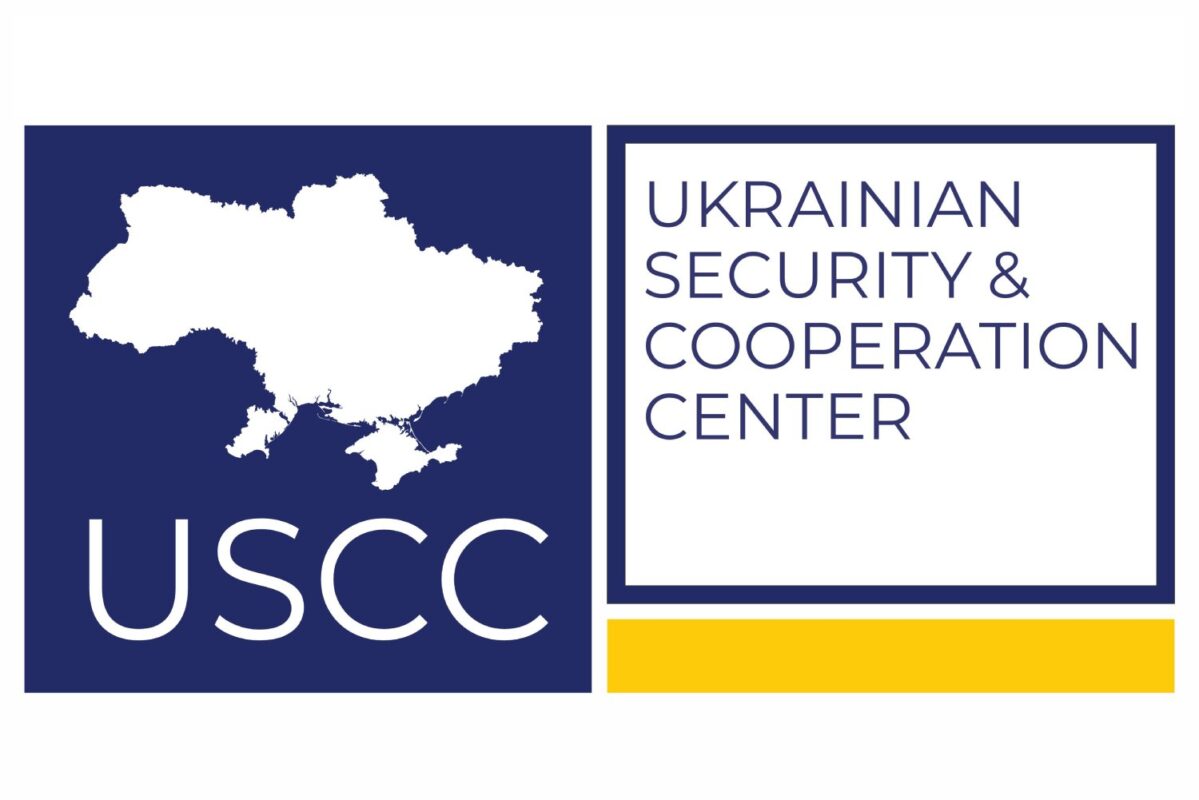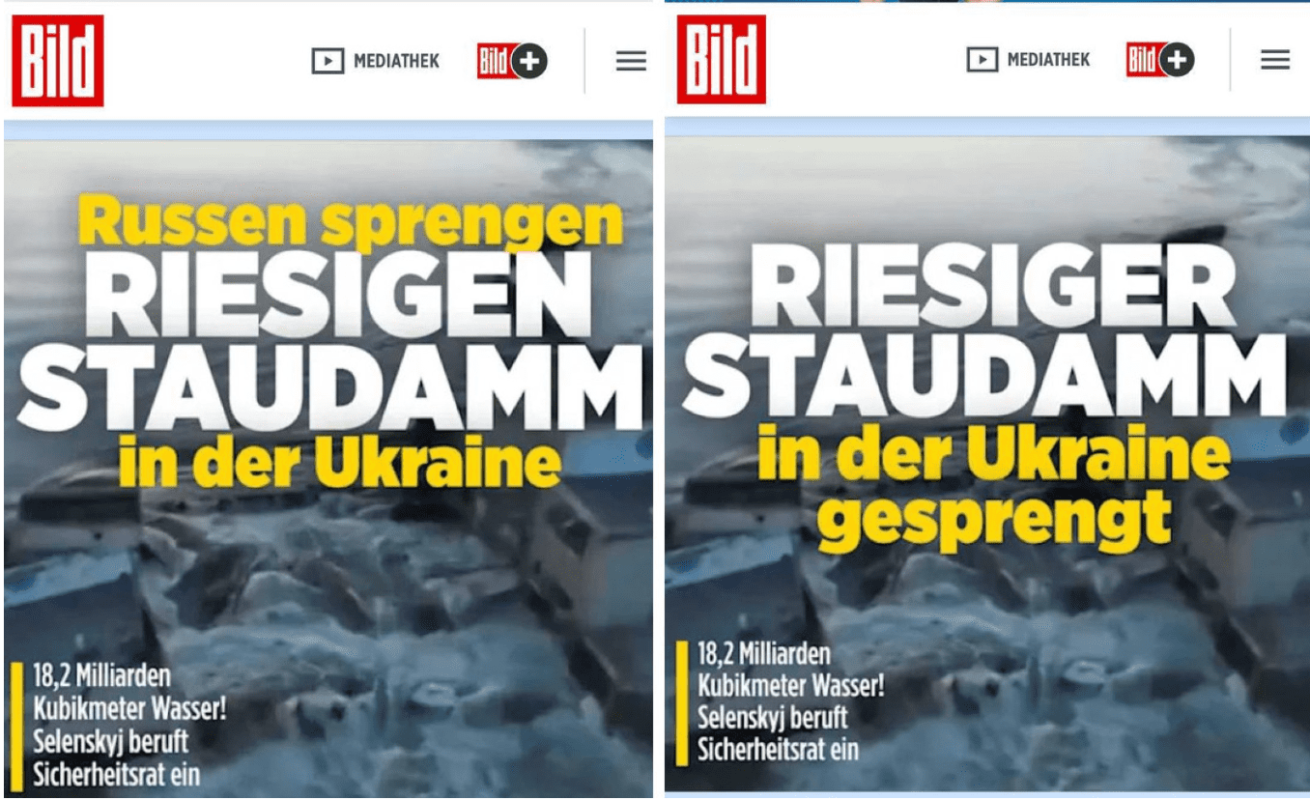On June 6, the Russian occupying authorities detonated the Kakhovka HPP in Nova Kakhovka and continue to terrorize Ukraine with reports of the largest nuclear power plant in Europe being mined. Denying their involvement in the catastrophe, the Kremlin shifts the blame onto the Ukrainian government.
OUR HANDS ARE CLEAN
From the first minutes of the disaster, Russian propaganda has been deflecting responsibility for the explosion and destruction of the Kakhovka Dam onto Ukraine. Apart from the usual “Kremlin mouthpieces” in the faces of Skabeeva and Kiselyov, Russia spreads manipulations through its agents of influence abroad and paid journalists who promote Kremlin narratives to convince the West that it is the Ukrainian side that is to blame for the catastrophe.
Indeed, the American host Tucker Carlson (former Fox News journalist) launched his own show on Twitter, stating that Ukraine is responsible for the dam’s destruction and accused Ukrainian President Volodymyr Zelensky and Ukrainian media of lying.
The German publication Bild altered the title of the article about the Kakhovka HPP explosion by removing any mention of Russia. The original headline was: “Russians detonated a huge dam in Ukraine.” However, after publication, the content changed, and the new headline reads: “A major dam exploded in Ukraine.”
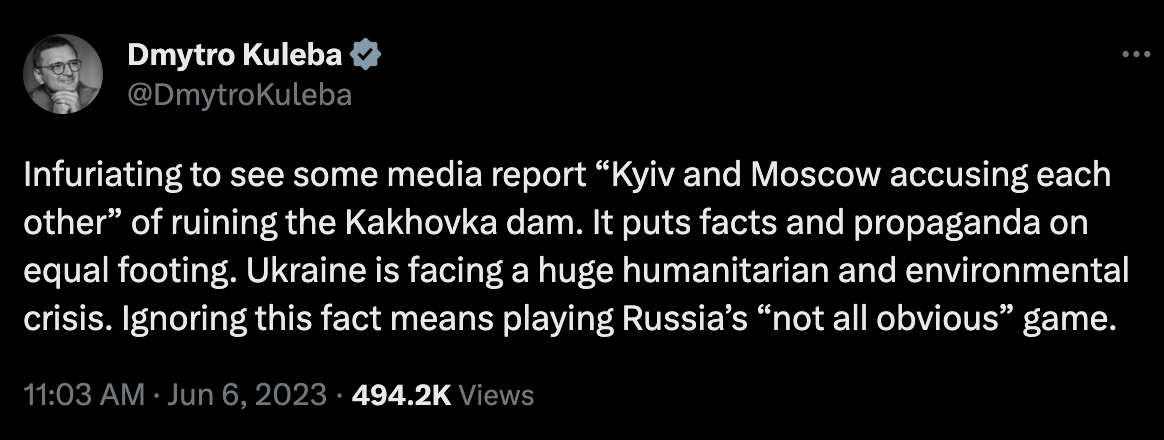
Some international media outlets also propagated Russian propaganda regarding the Kakhovka HPP. For example, Sky News and Politico quoted and disseminated Russian propaganda in their materials, claiming to maintain a balance of opinions. This created ambiguity about who is truly responsible for the Kakhovka HPP explosion.
Such examples cast doubt on the crimes of the aggressor country. However, all the facts indicate that it is Russia and its occupying regime are responsible for the explosion at the HPP, which led to major technological disaster.
RETROSPECTIVE ABOUT THE TRAGEDY
On the morning of May 6, the operational command “South” of the Armed Forces of Ukraine reported an explosion that destroyed the Kakhovka HPP dam, which was under the control of Russian occupying forces. As a result of the damage to the dam, uncontrolled water discharge occurred, affecting 80 populated areas within the flood zone. The Ukrainian authorities immediately organized the evacuation of the civilian population from the areas at risk of flooding, where evacuation teams would not come under direct fire from the occupiers.
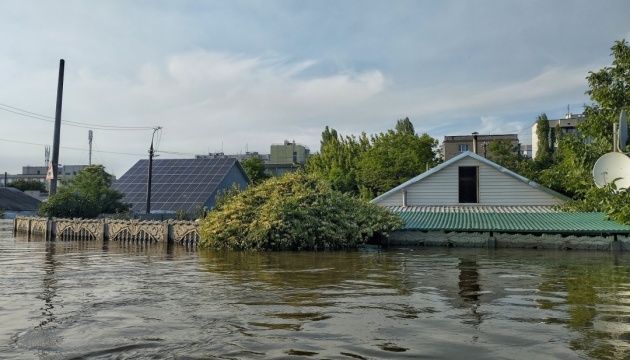
Critical water level in the temporarily occupied community of Hola Prystan. Photo – Hola Prystan’s city military administration
The consequences for the environment, as experts believe, are catastrophic, and environmental activists declare a real ecocide caused by Russia. Already now, it can be said that the flooding and contamination of water have led to the destruction of an entire biogeocenosis. Dozens or hundreds of plant and animal species have been or will be harmed or killed. According to preliminary data, the environmental damage has already exceeded $1.5 billion. In the future, the destruction of the hydroelectric power station will also have significant consequences. In particular, due to the devastation of the reservoir, large areas that were irrigated with water from the reservoir will suffer from drought. Experts predict that Ukraine may lose up to $10 billion due to drought in five years. The final damage to the environment can be assessed after the completion of the United Nations Environment Programme’s mission, which has started to assess the damage inflicted on Ukraine’s ecology.
According to the State Emergency Service of Ukraine (DSNS), as of July 2nd, one settlement on the right bank of the Dnieper River and 17 settlements on the temporarily occupied territory remain flooded.
UKRAINE’S REACTION
To overcome the consequences of the catastrophe and rescue people, an urgent meeting of the National Security and Defense Council (NSDC) was convened. Within an hour, the evacuation of the civilian population was announced. Since some of the flooded territories are still controlled by the occupiers, the organization of humanitarian corridors was critically necessary.
President of Ukraine Volodymyr Zelensky stated that the Russian occupiers committed the largest ecocide in decades. He said,
“Today, several things are evident. First: such an ecocide could not have occurred only as a result of dam shelling. To destroy it, Russian forces had to act deliberately – mine it, blow it up and demolish. Second: no country in the world should remain alone against such terror.” Zelensky called for an immediate and maximum reaction from the world to Russian terror.
In response to Russia’s criminal actions, Ukraine convened a meeting of the United Nations Security Council (the leading international security body responsible for global peace). Foreign Minister Dmytro Kuleba announced that Russia has already begun accusing Ukraine of the catastrophe and will initiate the convening of the UN Security Council.


The destroyed dam and HPP of the Kakhov reservoir. Evacuation of civilians in territories controlled by Ukraine. Photo – Radio Svoboda
Ukraine’s representative to the UN, Sergiy Kyslytsya, added, “Russia’s goal is to cause as many civilian casualties and maximum destruction as possible. By resorting to scorched earth tactics, or in this case, flooded land tactics, the Russian occupiers have effectively acknowledged that the seized territory does not belong to them, and they are unable to hold onto these lands.”
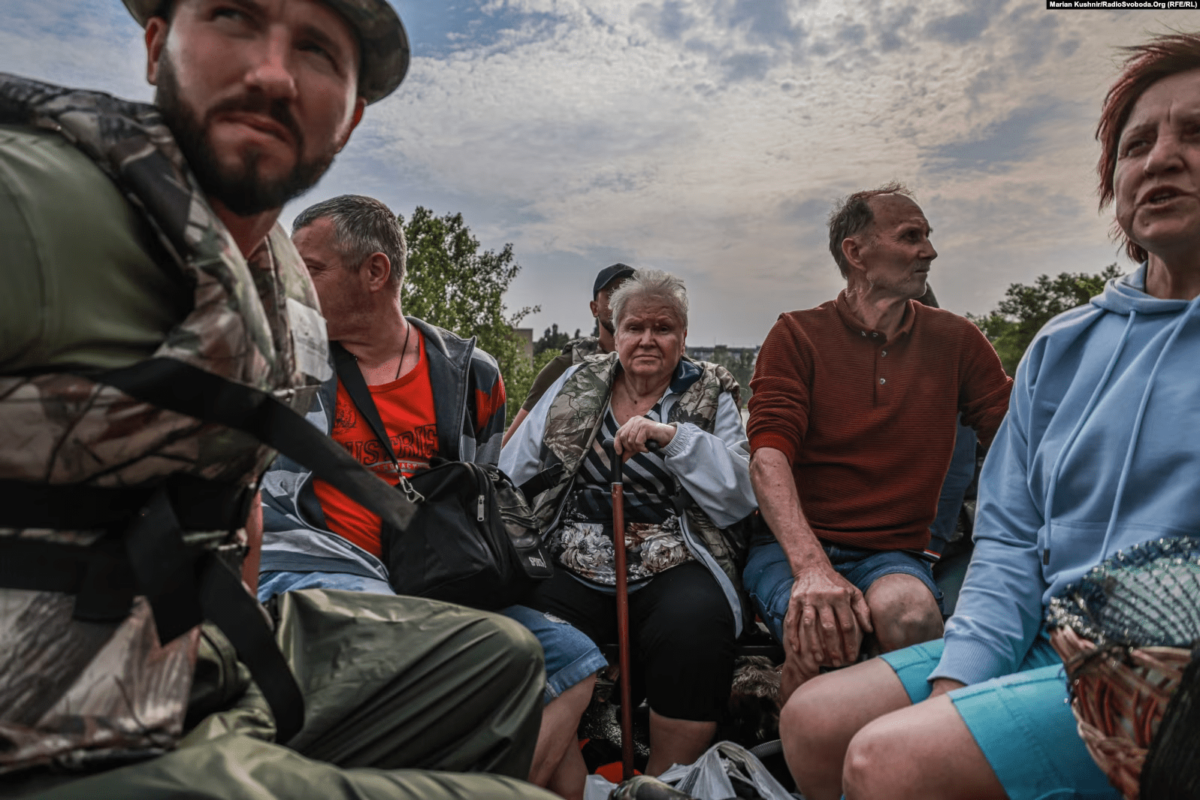
The Ministry of Foreign Affairs called on the international community to join the implementation of President Volodymyr Zelensky’s “peace formula,” including provisions regarding countering ecocide, nuclear, and energy security. They also appealed to the “G7” countries and the EU to consider imposing new sanctions against Russia. At that time, Ukraine was awaiting an immediate response from the world and assistance that would prevent even more extensive crimes by Russia.
RUSSIA’S REACTION
The Russian occupying authorities and collaborators initially denied the information about the sabotage of the Kakhovka Hydroelectric Power Station (HPS), calling it nonsense. However, as more reports came in from Kherson region and the number of casualties increased, they acknowledged the damage to the dam but assured the civilian population that there was no need for evacuation due to flooding. By jeopardizing the lives of civilians, the occupying authorities only recognized the need for evacuation later, but by then, valuable time had already been lost.
Due to the lack of organized evacuation of the civilian population in the occupied territory, many people were left stranded and forced to seek refuge on the rooftops of buildings and isolated patches of dry land that the floodwaters couldn’t reach. Later, the General Staff announced that the occupiers would allow evacuation only for those who held Russian passports.
Access to the flooded areas for humanitarian missions, including the United Nations, was also denied by Russia. The Russian Red Cross (whose activities have been deemed criminal by Ukrainian representatives in the ICRC) has not made any public statements since the dam’s destruction, let alone taken any measures to assist the affected civilian population.
After acknowledging the destruction of the Kakhovka HPS dam, the occupying regime immediately started accusing Ukraine and the Ukrainian Armed Forces (UAF): “Today, in the night, the Kyiv regime committed another crime – a missile strike on the Kakhovka HPS. This will not significantly affect the situation in the Kherson region, and there won’t even be a need for a large-scale evacuation,” said Vladimir Sald, the occupying governor of the region.
As predicted by Dmytro Kuleba, Russia announced the convening of the UN Security Council, and Vasily Nebenzya, Russia’s permanent representative to the UN, said that “statements about Russia’s alleged involvement in the situation around the Kakhovka hydroelectric power station are contrary to common sense”.


One of the versions propagated by Russian propaganda regarding Ukraine’s motives for destroying the HPS was the flooding of the Russian defense line on the left bank of the Dnipro River, in anticipation of a Ukrainian counteroffensive. Russian media began reinforcing this claim with a video fake showing the opening of floodgates at the Dnipro HPS into the Kakhovka reservoir to exacerbate the consequences of the disaster. However, eyewitnesses at the time reported the normal operation of the Dnipro HPS and stated that the Russians themselves had raised the water level in the reservoir to its maximum before the explosion, significantly amplifying the disaster’s impact.
In the situation of the Kakhovka HPS explosion, Russian propagandists resorted to their usual tactic: shifting responsibility for their crimes onto Ukraine, as they had previously done with the downing of MH17, in an attempt to confuse the Western audience, which may not have full context of the events.
REACTION FROM THE WEST
The reaction to the tragedy by international organizations, including the UN and the Red Cross, has outraged the Ukrainian government and society. In an interview with Bild, when asked about assistance from international organizations, the President of Ukraine responded, “We have not received a response. I am shocked. And if there was a reaction, it was very diplomatic.”
The world’s largest security organization, the UN Security Council, only communicated greetings for Russian Language Day on the day of the tragedy, and publicly reacted to the dam collapse only nine hours after the tragedy with a post stating, “Civilians and civilian infrastructure should not be targeted. They must be protected. At all times. Everywhere.” This communication was met with criticism because the tweet did not point out the party responsible for the tragedy, allowing Russia to continue its narrative of innocence. It was only in the evening of June 6 that the UN reacted and reminded everyone of the cost of the tragedy, which is a result of Russia’s aggressive war against Ukraine. A similar narrative was echoed in a video statement by the UN Secretary-General António Guterres on the evening of June 6.
The main office of the Red Cross reported the dam collapse only on June 7 and highlighted the involvement of the Ukrainian Red Cross without mentioning Russia. Meanwhile, the Ukrainian Red Cross, whose more than 50 volunteers, along with rescue services, evacuated people, emphasized that they could only act in the Ukrainian-controlled territory and did not have access to the civilian population on the left bank.


In contrast to international organizations, Western politicians and the media were more precise and categorical in identifying the cause of the explosion at the Kakhovka HPP. The President of the European Council, Charles Michel, and the NATO Secretary-General, Jens Stoltenberg, immediately attributed the blame for the dam blast to Russia. All three Baltic countries called the destruction of the Kakhovka dam a “war crime.” The White House also noted that it was Russia that controlled the HPP at the time of the explosion.
Western mainstream media share a similar opinion. However, international media outlets strive to draw their conclusions. For example, The New York Times conducted its investigation ten days after the tragedy, involving experts to prove Russia’s culpability. The NYT stated, “The evidence indicates that the dam was damaged by an explosion caused by the party that controls it: Russia.” Journalists from the investigative project “Polygraph” of Voice of America reached similar conclusions. Most international experts recognized the explosion at the HPP as a Russian crime. Despite this, Russian influence agents worldwide continue to deny it in local media and communities.
TO SUM UP

Political expert and Chairman of the Ukrainian Security and Cooperation Center, Serhii Kuzan commented
_________________________________________________________________________________________
“The scale of the Kakhovka tragedy is so significant that the Russians involved Putin himself in whitewashing it. He was forced to publicly comment on the explosion and tried to justify it by claiming that much of the damage was caused by Russians themselves. Russia’s main thesis is that “it’s not that straightforward.” The main narrative of all the manipulations was statements about the lack of evidence of Russia’s organization of the terrorist act. This was evident from the arguments. Opposition media and politicians, public figures who, even formally being opposition to Putin’s regime, spread its ambiguous message.
What the Western reader must notice in these statements is their repetitiveness. Russia has been employing the same tactic of ‘ambiguity’ since 2014, embedding it and introducing it into the public discourse.
As a result, instead of discussing how the world should react to the most significant post-Chornobyl misconduct by Russia, we are debating the evidence we have. Unfortunately, Russian propaganda has found loopholes to convey its opinion to the information space of Western countries.
Examples like the power plant incident make us think about information security and the information defense of Western societies. As long as discussions continue, and we see the impunity from the consequences of a technological catastrophe, Russia will undoubtedly seek to repeat it. After less than a month since the tragedy, we receive nuclear threats regarding the Zaporizhzhia Nuclear Power Plant.
METHODS OF COUNTERACTION
Undoubtedly, this catastrophe should not be ignored. It helped to identify new agents of influence, who still enjoyed trust from their audience and showed that international organizations are still tolerant of Russia, its crimes, and susceptible to its disinformation.
The current reaction must have two components: the first one is military. We must deliver a devastating blow to the enemy, and for that, we need to obtain all the necessary means. Without adequate offensive weapons and armaments, it becomes more challenging to defend our land and citizens. What Russia is doing now is not just war, but also ecocide of the planet. The weak reaction of the international community only showed Russia that it can continue its actions.
The second component is diplomacy. The world must finally acknowledge that Russians are committing terror and must be excluded from all international organizations and erased from the political map of the world. Veto power, and negotiations – these instruments allow the occupiers to continue committing military crimes and violate the rules of war while demanding the world to comply with all their rights according to international law.


Photo – Ukrainian Security and Cooperation Centre
At the global level, with the participation of all organizations, whose membership Russia still holds, it is necessary to recognize it as a terrorist state. It is essential to implement a ‘united voice policy’ at the most local and accessible levels – both in parliamentary chambers and, on the streets of European cities, on personal social media pages. At the same time, we need to identify, label, and localize the Russian propaganda and influence network abroad.
We must compel politicians and international organizations to react, take a firm stance, and voice this position: Russia is a terrorist state that will only stop where it is stopped.”
